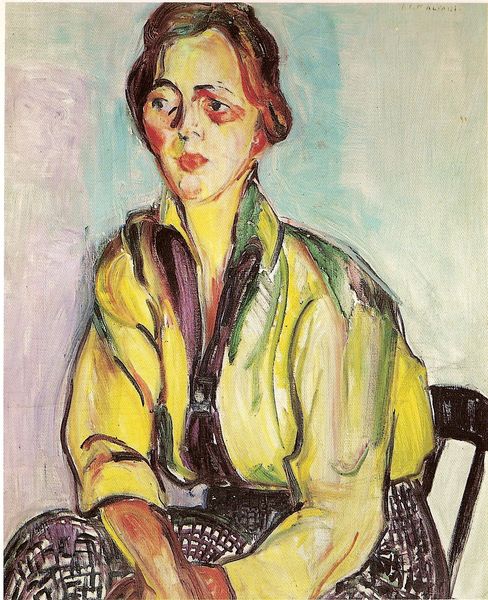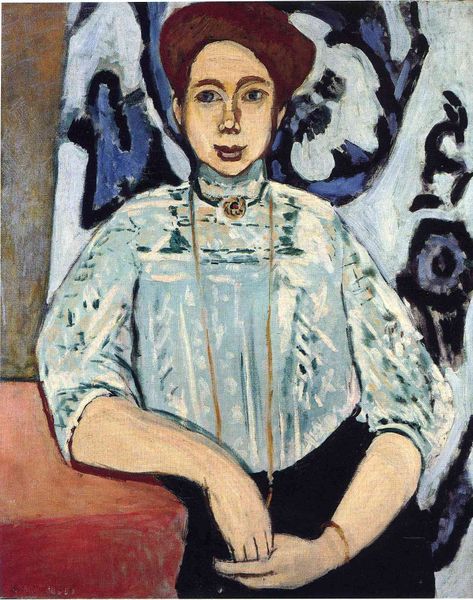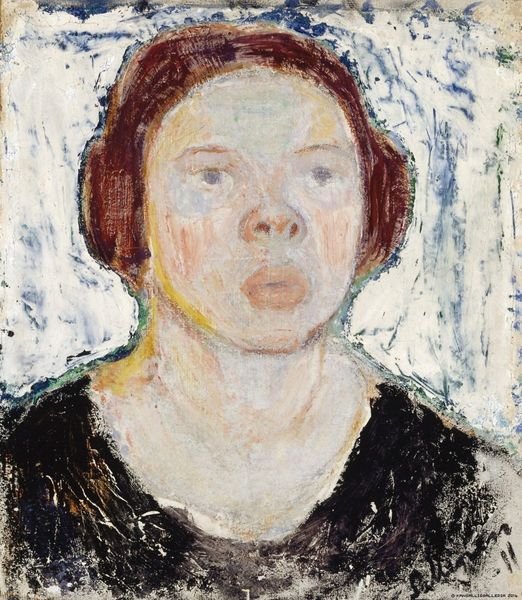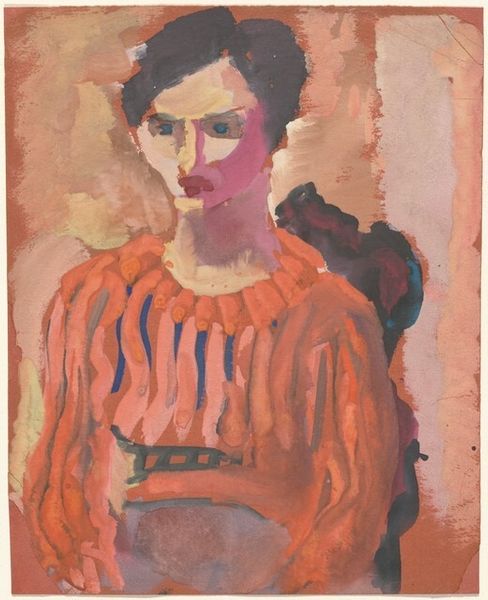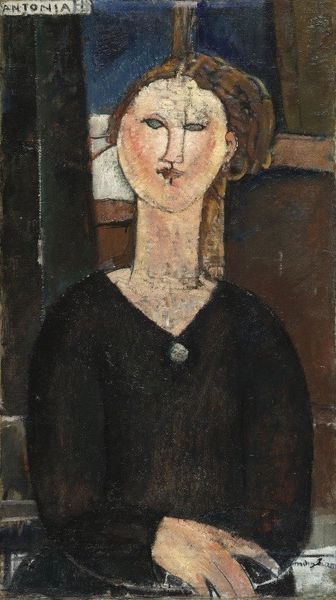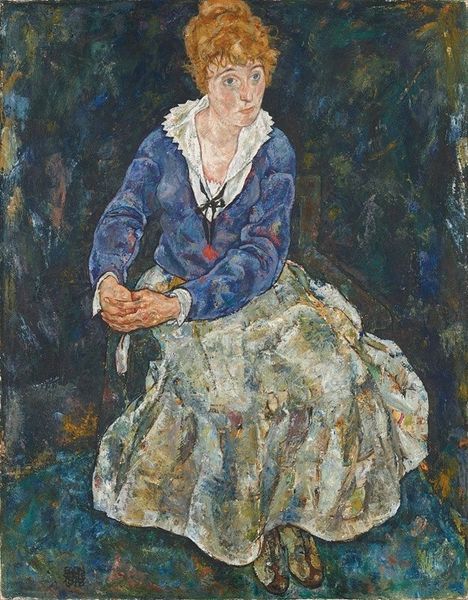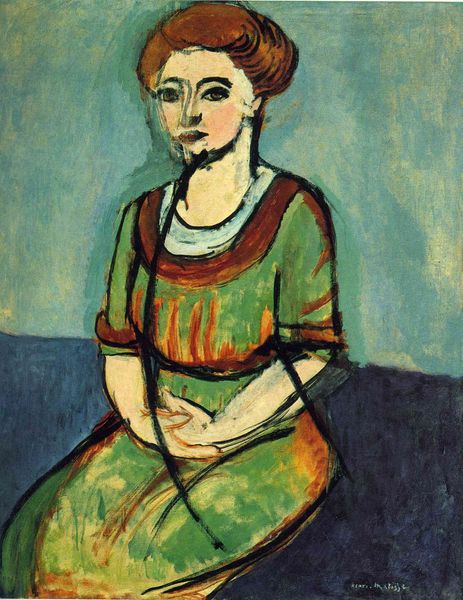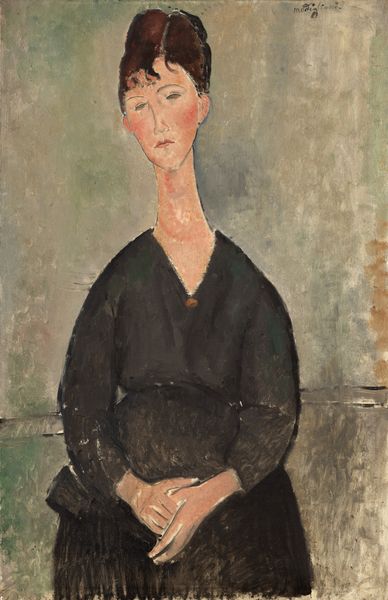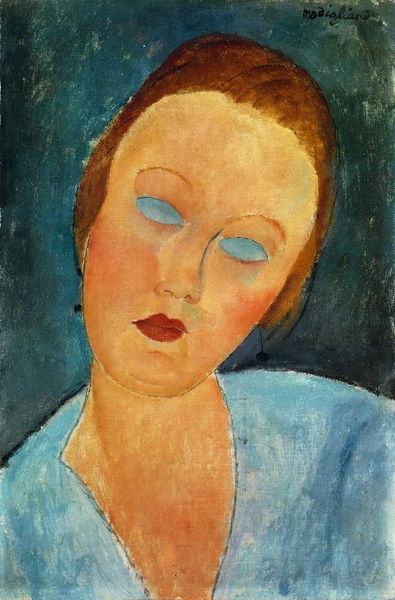
painting, oil-paint
#
portrait
#
painting
#
canvas painting
#
oil-paint
#
oil painting
#
expressionism
#
northern-renaissance
#
lady
#
portrait art
#
modernism
#
fine art portrait
#
expressionist
Copyright: Public domain US
Curator: We're looking at "Tyttö Riekkalasta," or "Girl from Riekkala" by Tyko Sallinen, painted in 1914. The artwork uses oil paint on canvas. What are your first thoughts? Editor: Immediately, I'm struck by the texture. The paint application is so raw, almost sculptural. The visible brushstrokes create this incredible energy. It’s heavy with the weight of its own materiality, wouldn’t you say? Curator: Definitely. The rawness lends itself to the deeper emotional narrative. The girl’s unflinching gaze holds the cultural memory of a specific time and place. Notice the deliberate use of cool blues and violets in contrast with the pale pink of her dress—typical Sallinen to utilize stark contrasts, pulling from the collective psyche of Finnish folk art traditions. Editor: It's true, the limited palette emphasizes structure and form. See how Sallinen plays with simplified geometric shapes, almost reducing the figure to its essential components. It pulls at this kind of early Modernist ethos, really distilling form into its purest essence. Curator: And that's what is also remarkable. It seems a far cry from Academic portraiture—more symbolic of something deeper. Perhaps the painting serves as a vessel. Those large, blue eyes become mirrors for cultural and personal resilience within a society experiencing enormous change. Editor: Well, her intense expression seems both defiant and vulnerable. Her face pushes itself to the forefront, commanding the observer’s attention. Perhaps her very directness, and those heavily applied marks of paint are a sort of rupture with traditional painting. The texture refuses a classical, smooth appearance. Curator: Yes. The image evokes an immediate sense of empathy, despite its rough handling. I consider how her depiction, while rooted in its specific context, can transcend that moment in history. She symbolizes youthful defiance. Editor: I think your iconographic reading really gives dimension to the painting. For me, examining how Sallinen manipulates shape, color, and line unveils so much intention behind its design, making me really question the definition of portraiture and its traditional role. Curator: Indeed. By considering all that, perhaps we are starting to tap into Sallinen's deeper aim, using the familiar visual language of portraiture as a gateway for something more…universal.
Comments
No comments
Be the first to comment and join the conversation on the ultimate creative platform.



